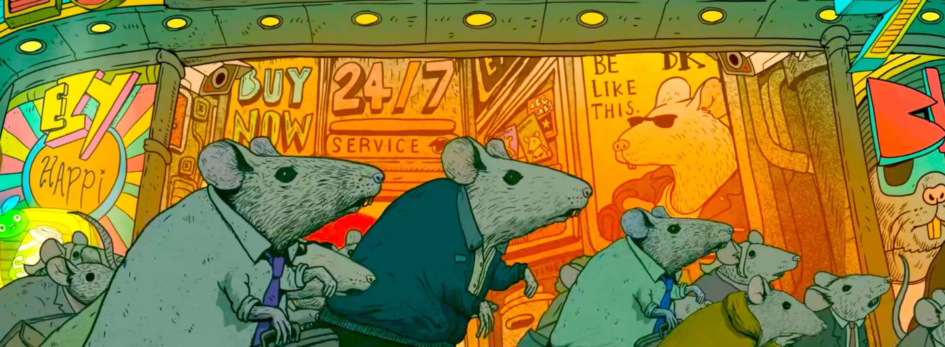Imagine this: textbooks pile up on your desk, deadlines loom like thunderclouds, and notifications from social media ping incessantly. The pressure to excel, to be connected, to “adult” in this fast-paced, hyper-connected world is relentless. And beneath the surface, a tide of anxiety and exhaustion threatens to pull you under. This, for many, is the reality of life in the modern landscape.
The constant juggling act takes a toll. Mental well-being, once a whispered concern, is now front and centre. Depression, anxiety, burnout – these conditions plague individuals across professions, ages, and backgrounds. Yet, despite increased awareness, stigma persists, and access to quality care remains a hurdle for many.
So, what do we do? Is the current approach, characterised by awareness campaigns and individual therapy, enough? Or is it time to consider more radical solutions, like legal regulations to protect and promote mental health?
In India, the awareness about mental health is comparatively quite inadequate compared to Western countries. In more recent, mental health awareness took a sharp rise in the post-pandemic period and some prominent cases which almost shook the nation like the Sushant Singh Rajput Suicide case have also proved to be an important learning among the citizens towards mental illness and mental awareness. Earlier, the perception towards mental health and psychological illnesses among youth was something very radically defiant towards its acceptance as an illness. General viewpoint on mental health is pretty extreme; they are to an extent related to disorders like personality disorders, schizophrenia etc. only. Common mental issues like stress and depression are often overlooked due to this misconception. Marketing and Cinema are often seen as trend setters that highly influence the perception of society in general and Indian cinema has somewhat helped Indians to shape these extreme notions of mental issues. If we talk about mental health in India, who is prone to mental illness? Particularly in the era of social media and the impacts of globalization, which have partially overtaken the student population and nearly 60% of the working population in the nation.
If we try to talk about the student population in India mostly aged between (14-20 years) especially high school students who aim to secure a good place at prestigious colleges like IITs, AIIMS and NITs. After class 10, a student’s adolescence is consumed by competitive pursuits, and we watch an unrelenting rat race as a result of their delicate minds—which would have performed far better in any other endeavor—trying to compete in a race that was not meant for them. Who takes accountability for these imaginative thoughts that give them false hope? Parents? Coaching? Or the system? Who has created this system? There is no architect of this system, in terms of sociology; the system means nothing but a bunch of society following up a trend. “This is the system”. Let’s discuss how the popularity of computer engineering in India has shifted over time. It began in the early 2000s, continues to exist to this day, and has expanded far faster than MNCs. In some ways, the coaching sector has benefited from this “IT Boom,” making Kota, a city in Rajasthan, the official coaching factory of India. Kota, a tiny town in Rajasthan, is well-known for having a lot of coaching facilities that help kids get ready for the most competitive entrances in the nation for engineering, medicine, and other fields. However, it has also gained recognition for a large number of students committing suicide and falling into the dark pit of depression.
November, 2023 the Supreme Court was hearing a PIL filed by a Mumbai-based doctor Aniruddha Narayan Malpani, who blamed coaching institutes for driving students to death. The petition before the Supreme Court stated, “Student suicides constitute a grave human rights concern, and the Center’s careless approach to passing legislation despite the rising suicide rate betrays the state’s indifference to safeguarding these young minds, who are our nation’s future, and their constitutional right to live in dignity as guaranteed by Article 21”. It further added, “The coaching institute industry has now turned into a market where students are tricked, pursued, and pilfered”. As per the petition, it’s an industry that prioritises financial gain over students’ welfare. It went on to say that these kids, who are just 14 to 16 years old, lack the mental capacity to handle pressure because they are suddenly exposed to such a competitive environment. It also added that the education is being commercialised and in the absence of proper regulation, the students are being exploited. Huge amounts of money is extracted from students of even middle and lower-middle class families, where parents stake everything on their children’s future. Social disconnect and limited interaction with family adds to the pressure. The Court refused to entertain the petition against any coaching institutions even the bench quoted, also comprising Justice SVN Bhatti said, “Suicides are not happening because of the coaching institutes. They happen because the children cannot meet the expectations of their parents. The number of deaths could be much higher.” The bench further quoted “The majority of us would prefer not to have coaching institutes”, the bench stated “However, parents now have high expectations and exams have become quite competitive. In competitive tests, students lose out by half a mark or a mark”. The court further advised the petitioner to approach the Rajasthan High Court and the Central Government. In reaction to the multiple student suicide cases due to academic pressure, the government of Rajasthan has planned to introduce the Rajasthan Coaching Institute (Control and Regulation) Bill 2023 to reduce some of the stress on students. The law intends to establish required rules for coaching institutes and alleviate the current academic strain placed on pupils. The bill’s introduction of an aptitude test for pupils enrolling in coaching centres is one of its main features. A youngster would not be eligible to take the admission exams for undergraduate engineering or medical programmes if they failed that test.
The bill also calls on educational institutions to cease elevating the best students because it harms average and below-average pupils. The measure mandates that students attend a counselling session following each test since the institutes administer tests on a weekly basis. The authority will implement extensive measures aimed at reducing students’ stress levels in order to tackle the grave problem of elevated stress levels among pupils. It will need aptitude tests to be taken by pupils before they can enroll. The draft law states that frequent meetings with psychologists for parents and students will be held after the results of such tests are disclosed to the parents to inform them of their ward’s potential.
Now the problem does not just rely on the aspiring students who aim to get admission in IIT’s or AIIMs but shockingly the ones who got admitted into IITs are also vulnerable to severe mental illness and suicide. The reason for suicides taking place inside the prestigious institutes are shocking and a number of severe casteism incidences as well as the deaths of dalit students at several IITs in recent years have come to light due to institutional issues. Even if the school has declined to accept accountability, these surveys convey the hostile and challenging atmosphere that students must endure and many students who belong to underprivileged backgrounds feel undervalued. Recently, the Indian Institute of Technology (IIT) Madras has suspended a professor months after the family of a PhD student at the institute blamed him for his suicide in March. The student was found dead on March 31 and his brother wrote to the institute blaming his PhD supervisor for it. The PhD scholar at the mechanical engineering department lived outside the campus. His WhatsApp status before his suicide said: “I’m sorry, I’m not good enough.” This was the third suicide by an IIT Madras student since February.
In an email to IIT Madras’s director V Kamakoti, the student’s brother attached a six-page letter handwritten in Hindi. It said the student was on medication for mental health issues, which the supervisor knew and worsened by adding pressure on him. “He had a meeting with his supervisor on March 31 morning, came back home, and put up the Whatsapp status ‘I’m not good enough’ before killing himself,” the email said. “He informed us that his degree will be delayed because the guide was making him do more work”. These instances set a raw example that despite having such a well-known reputation, these institutes are overshadowed by these incidents which also puts a question on their credibility and hampers the mental health of the students and provokes them to take such harsh measures.
How is the legislative body taking these issues as a point of concern? If we keep a few states aside, then there is no rigid law being made by the central or state government to prevent suicides and promote mental health awareness. According to the NCRB data in the year 2022, a total of 13,044 students took their own life which accounted for 7.6% of total cases of suicide. Further, the data also revealed that student suicide also went up by 10% concerning last year data.
In order to prevent suicide cases among students, the Ministry of Health and Family under the Government of India has announced the “National Suicide Prevention Strategy”. The strategy is in line with the World Health Organisation’s South East-Asia Region Strategy for suicide prevention and also aims to establish psychiatric outpatient departments that will provide suicide prevention services through the District Mental Health Programme in all districts within the next five years. It also aims to integrate a mental well-being curriculum in all educational institutions within the next eight years. It envisages developing guidelines for responsible media reporting of suicides and restricting access to means of suicide. As a concluding remark, we demand for strict legal framework for the suicide prevention strategy which should be framed as a law.
By Abhishek Sinha and Nafeaa Vohra, 3rd Year B.A (Econ.), Faculty of Arts, The Maharaja Sayajirao University of Baroda, Vadodara

